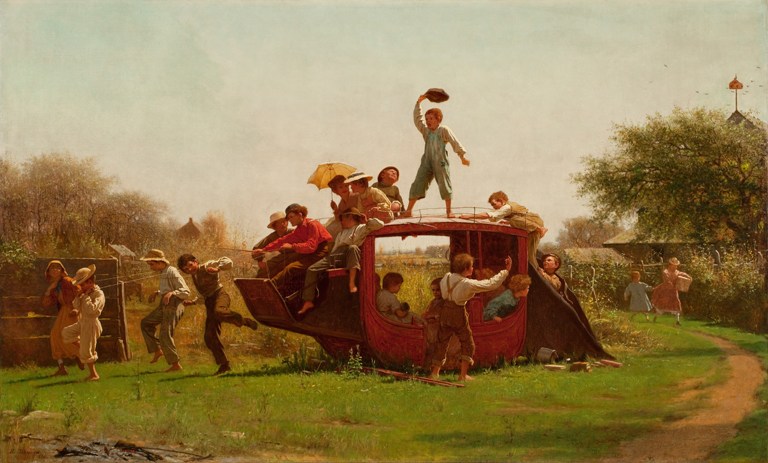Eastman Johnson and a Nation Divided
American Collection Galleries
The Annual Layton Art Collection Focus Exhibition
When American artist Eastman Johnson (1824–1906) debuted Negro Life at the South at New York’s National Academy of Design in 1859, critics hailed it as a masterpiece. It quickly became a touchstone for abolitionists and proponents of slavery alike for its indictment of urban servitude and poverty on the one hand and its seemingly idyllic view of southern rural culture on the other. After the Civil War, Johnson returned with a vengeance in 1871 with The Old Stagecoach. Viewers celebrated the painting as the artist’s “latest and greatest.” It garnered unanimous praise for its nostalgic look at the nation’s childhood; yet, it also contains subtle hints at post–Civil War anxieties. This exhibition unites in conversation these two masterpieces as it explores Johnson’s critical reception and each painting’s historical and social context.
Eastman Johnson and a Nation Divided inaugurates a new series of focus exhibitions that will highlight the Layton Art Collection, one of Milwaukee’s earliest, seminal collections of American and European paintings and sculpture that Frederick Layton formed in the late-nineteenth century. The yearly exhibition, together with related programming, will explore in depth a significant work from the Layton Art Collection, providing new insights and interpretations.
- Eastman Johnson,The Old Stagecoach, 1871. Oil on canvas 36¼ × 60⅛ in. (92.08 × 152.72 cm) Layton Art Collection, Inc., Gift of Frederick Layton L1888.22 Photo by John R. Glembin.

